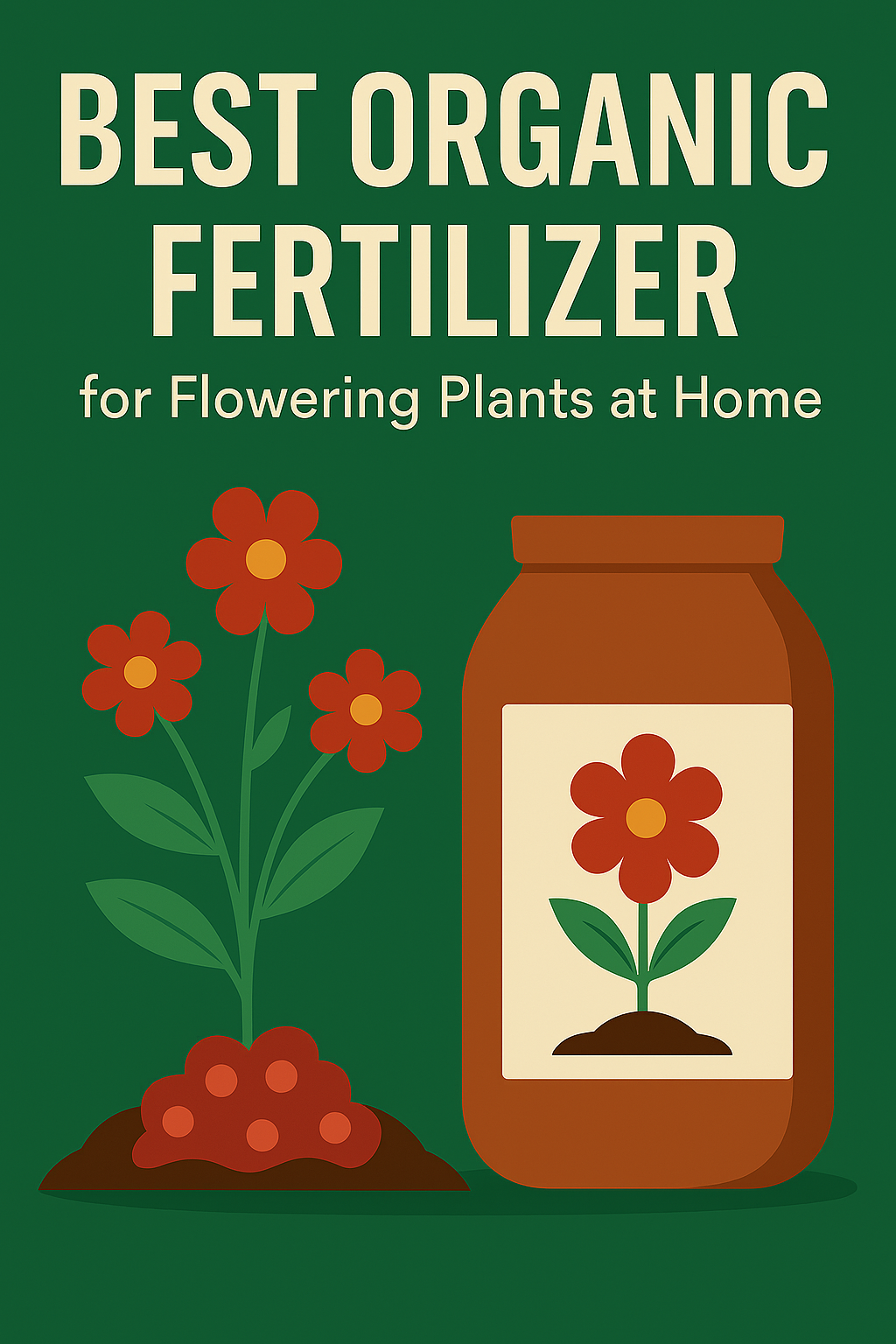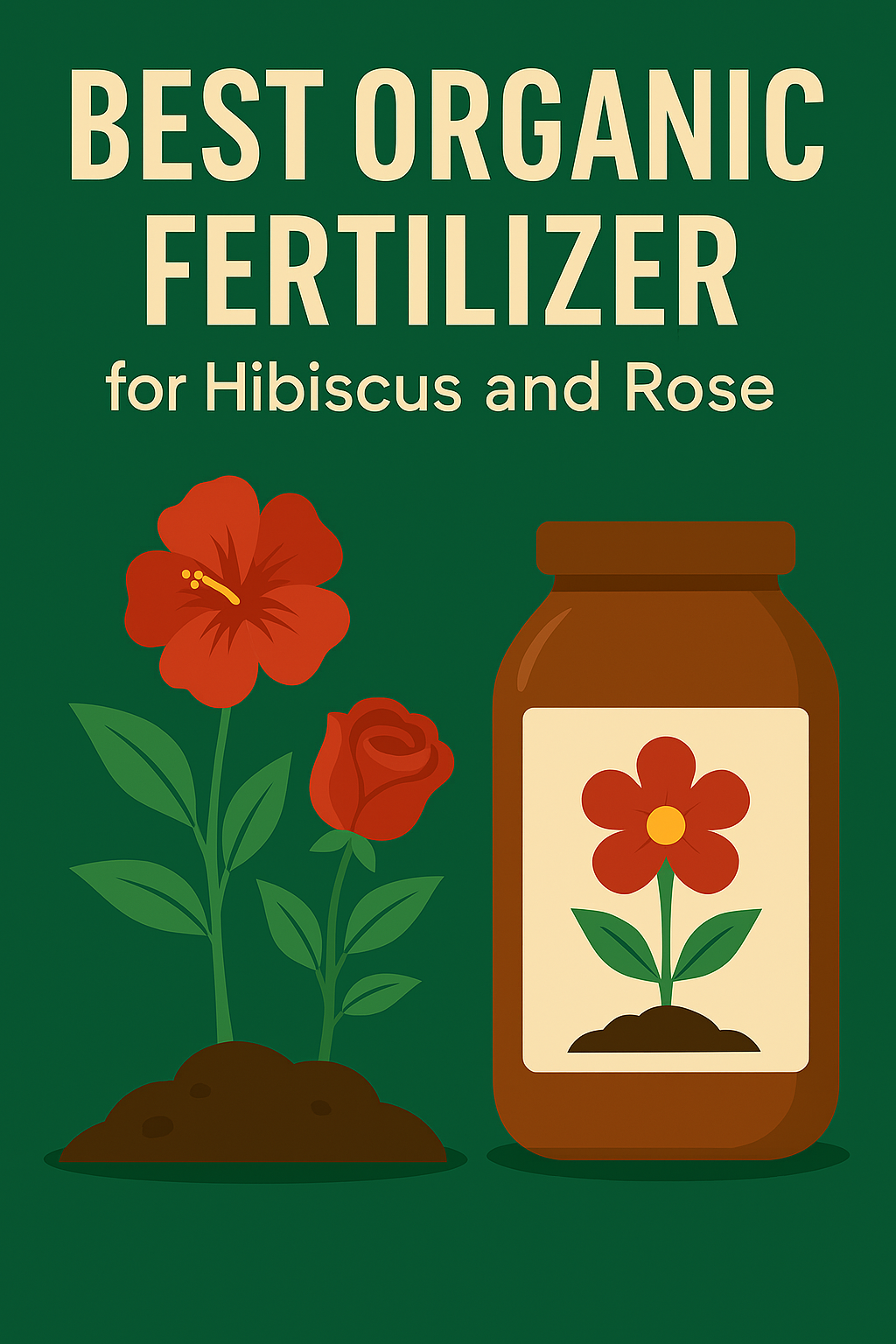Best Organic Fertilizer for Flowering Plants at Home
best organic fertilizer for flowering plants while preserving soil health. Unlike chemical fertilizers, they release nutrients slowly and enrich soil microbes. This improves root strength and ensures healthy flowering. Home gardeners prefer organic options for safe, long-lasting, and eco-friendly results.

Why Flowering Plants Need the Right Fertilizer
Flowering plants require balanced nutrients to bloom consistently. Nitrogen promotes leaf growth, phosphorus supports flower development, and potassium strengthens roots and stems.
Without adequate nutrition, plants may show:
- Yellowing leaves
- Bud drop
- Stunted blooms
Although chemical fertilisers can produce immediate benefits, they eventually degrade soil. Organic options build soil structure, increase water retention, and improve microbial activity.
When plants get the right nutrients naturally, they flower longer and healthier. Whether grown in pots or garden beds, flowering plants thrive when fed with the correct organic blend tailored to their needs.
Best Organic Fertilizers for Flowering Plants
Vermicompost
Earthworms break down degraded organic waste to create vermicompost. It has high levels of potassium, phosphorus, and nitrogen (NPK). It keeps moisture in the soil, promotes root growth, and enhances soil aeration.
How to use: Mix a handful into potting soil every 15–20 days.
Best for: Roses, hibiscus, marigolds.
Bone Meal
Bone meal is high in phosphorus and calcium. It supports flower and root development. Use it when transplanting or during the flowering phase.
How to use: Add 1–2 tablespoons per plant, once a month.
Best for: Hibiscus, jasmine, geraniums.
Mustard Cake Powder
A by-product of extracting mustard oil is mustard cake. It promotes flowering and bushy growth and is high in nitrogen.Mustard cake is a by-product of mustard oil extraction. It’s nitrogen-rich and encourages bushy growth and flowering.
How to use: Soak 100g in 1L water for 24 hours. Filter and apply every 2–3 weeks.
Best for: Indoor flowering plants and terrace gardens.
Banana Peel Fertilizer
Banana peels contain potassium and phosphorus. They’re simple, homemade, and effective.
To use, chop the peels and bury them in the ground close to the root. Or make a peel tea by soaking peels in water for 3–4 days.
Best for: Bougainvillaea, roses, lilies.
Organic Liquid Fertilizer (Vermiwash)
Vermiwash is a liquid extract from vermicompost. It’s a nutrient-rich foliar spray.
How to use: Mix 1 part vermiwash with 4 parts water. Spray every 10 days.
Best for: All flowering plants, especially in pots.
How to Effectively Apply the Best Organic Fertiliser at Home for Blooming Plants
- Always use well-decomposed fertilizers to prevent root burn.
- Apply during early morning or evening.
- Water plants after applying fertilizers to help nutrient absorption.
- Alternate between solid (compost, cake) and liquid (vermiwash, compost tea) forms.
- Avoid over-fertilizing. Stick to a biweekly or monthly schedule.
Proper timing and balance are key. Feed more during active growth or flowering season and reduce in winter.
Tips for Boosting Flower Growth Organically
- Ensure 6–8 hours of sunlight for most flowering plants.
- Use organic potting mix rich in compost and cocopeat.
- Prune dead leaves and faded flowers regularly.
- Keep the soil slightly moist but not waterlogged.
- Rotate fertilizers to provide a range of nutrients.
Healthy roots mean more flowers. Pay attention to the soil as well as the plant..
Common Mistakes to Avoid with Flower Fertilization
- Using raw kitchen waste directly – causes fungal growth.
- Overusing one type of fertilizer – leads to nutrient imbalance.
- Skipping sunlight – no fertilizer can replace natural light.
- Ignoring pests – healthy plants start with pest-free soil.
Also, avoid feeding flowering plants during dormancy or shock periods (like right after transplanting).
Final Thoughts
best organic fertilizer for flowering plants help you grow vibrant, healthy flowers without harming the environment. From kitchen waste to ready-made options like vermicompost and bone meal, there’s a sustainable solution for every plant lover.
Feed your plants consistently, monitor their response, and adjust based on the season and type of flower.
For best results, combine solid and liquid organic fertilizers, and maintain a good watering and pruning routine.
Best organic fertilizer for hibiscus and rose
Hibiscus and rose plants are prized for their vibrant blooms and ornamental beauty, but achieving healthy growth and abundant flowering demands the right nutrition. In this comprehensive guide, we explore the best organic fertilizers for hibiscus and rose, their benefits, how and when to apply them, and everything else needed to make your garden flourish.

Why Organic Fertilizers Are Best for Hibiscus and Rose Plants
best organic fertilizer for flowering plants offer natural, slow-releasing nutrients that improve soil health, support microbial life, and minimize chemical buildup. Unlike synthetic alternatives, organic options enhance both plant vitality and long-term soil fertility, which is vital for flowering plants like hibiscus and roses.
Key Benefits:
- Promotes continuous blooming
- Improves root strength and resistance
- Boosts soil structure and water retention
- Reduces risk of over-fertilization and root burn
Essential Nutrients for Hibiscus and Roses
To understand what makes a fertilizer ideal, we must look at the required nutrients:
- Nitrogen (N): Promotes healthy green foliage
- Phosphorus (P): Encourages flower production and root development
- Potassium (K): Promotes disease resistance and general plant health
- Micronutrients: Including magnesium, calcium, sulfur, iron, and zinc—essential for vibrant blooms and chlorophyll production
Top Organic Fertilizers for Hibiscus and Rose
1. Vermicompost – The All-Rounder
Vermicompost is nutrient-rich, derived from earthworm castings. It improves soil aeration, retains moisture, and provides a gentle NPK balance perfect for hibiscus and roses.
Application: Mix 2-3 handfuls around the base of each plant every 3-4 weeks.
Benefits:
- Enhances flowering
- Introduces beneficial microorganisms
- Neutral pH suitable for all soil types
2. Bone Meal – Phosphorus Boost for Flowering
Bone meal is a slow-releasing organic phosphorus source, perfect for deep root growth and heavy blooming.
Application: Use 1 tablespoon per plant once in early spring and again in mid-summer.
Benefits:
- Stimulates bud formation
- Improves flower size and color
- Supports strong root development
3. Neem Cake (Neem Khali) – Soil Protector and Fertilizer
Neem cake is a natural insect repellant and fertiliser. Rich in nitrogen and organic carbon, it improves soil quality while protecting from nematodes and fungal infections.
Application: Mix 100-200g in the topsoil during planting or once every 30 days for established plants.
Benefits:
- Controls soil pests and diseases
- Encourages organic matter buildup
- Enhances overall plant immunity
4. Mustard Cake (Sarson Khali) – Organic NPK Source
Mustard cake provides a strong dose of nitrogen and beneficial micronutrients. It’s ideal for lush foliage and bloom support.
Application: Soak 100g in 1L of water for 24 hours, then use the diluted liquid to water the plants every 15 days.
Benefits:
- Boosts flower production
- Improves soil texture
- Encourages robust growth
5. Vermiwash – Instant Liquid Nutrient Shot
Vermiwash is the liquid extract from vermicompost systems, full of enzymes, amino acids, and micronutrients.
Application: Spray diluted vermiwash (1:10 with water) on leaves every 10-15 days.
Benefits:
- Acts as a bio-pesticide
- Supports foliar nutrition
- Improves flower sheen and vibrancy
DIY Organic Fertilizer Mix for Maximum Flowering
Create your own powerful organic blend for hibiscus and rose:
Ingredients:
- 2 parts vermicompost
- 1 part bone meal
- 1 part neem cake powder
- 1 part mustard cake powder
Instructions:
Mix thoroughly and apply 100g per plant monthly. Water immediately after application.
Best Practices for Applying Organic Fertilizers
Timing Matters:
- Spring (March–April): Use bone meal and vermicompost to boost early bloom.
- Mid-Summer (June–July): Apply neem cake and mustard cake for continuous flowering and protection.
- Monsoon (August): Focus on neem and vermiwash for disease control.
- Autumn (October): Use bone meal again to encourage post-monsoon flowering.
How to Apply:
- Loosen the soil around the plant base gently.
- Mix the organic fertilizer into the top 2–3 inches of soil.
- Water thoroughly after application.
Avoid These Mistakes:
- Don’t over-apply bone meal—it may cause phosphorus lock.
- Avoid mustard cake near seedlings—it may burn roots if not diluted.
- Never apply dry fertilizers to dry soil—always water before and after.
Organic Liquid Fertilizers for Faster Results
While solid fertilizers work over time, organic liquid fertilizers offer a quick nutrient boost. Options include:
- Banana peel tea – potassium-rich for blooming
- Compost tea – full of microbes and nutrients
- Diluted cow dung slurry – traditional but effective
Use them as foliar sprays or soil drenches every 10–15 days.
Companion Practices for Healthy Blooming
Even the best organic fertilizers must be paired with proper care:
- Pruning: Trim dead branches and faded flowers to encourage new buds.
- Sunlight: Ensure 5–6 hours of direct sun for roses and hibiscus.
- Pest control: Use neem oil sprays to control aphids and whiteflies.
- Watering: Water early in the morning or evening. Avoid overwatering.
Conclusion: A Blooming Organic Garden Awaits
Choosing the right organic fertilizer for hibiscus and roses is essential to unlocking their full blooming potential. By using a blend of vermicompost, bone meal, mustard cake, and vermiwash, you not only improve the plant’s health but also enrich the soil for long-term sustainability. Regular care, timely feeding, and organic protection will ensure your plants bloom abundantly season after season.
Order authentic vermi-wash from Bharatkhaad.com and give your crops the natural boost they deserve! 🌿💧
Also checkout-:
Bharat Bio Gold – 100% Organic Fertilizer for 3X Crop Yield
Top 3 Benefits of Coco Peat | Organic & Eco-Friendly Growing Medium
Top 10 Indoor Plants – Stylish, Easy, Air-Purifying
Top 5 Mitti Pots for Healthy Cooking | Eco-Friendly Clay Cookware
Top 7 Ceramic Pots for Home Décor | Elegant & Durable Planters
Top 5 Colorful Cemented Pots for Garden & Home
Top 5 Green Grow Bags for Gardening – Reusable & Eco-Friendly
Top 10 Decorative Plant Pots – Stylish & Durable Options
Mustard Cake Fertilizer – 100% Organic Plant Booster for Bigger Blooms
Vermiwash – 100% Organic Liquid Fertilizer for 2X Plant Growth
Cold-Pressed Neem Oil – 100% Organic Insect Control for 30+ Pests
BharatKhaad Organic Bone Powder – 2X Root & Flower Growth Naturally
Neem Khali – 100% Organic Pest & Soil Solution for Healthier Crops
Buy Organic Vermicompost – 100% Natural Soil Booster for 3X Growth
